You can read this exclusive content thanks to the FALATH & PARTNERS law firm, which assists American people with Slovak roots in obtaining Slovak citizenship and reconnecting them with the land of their ancestors.
Travelling from Humenné to the Vranov nad Topľou district, it’s impossible to miss the ruins of Čičava Castle. Perched high above the main road tracing the Ondava River, the crumbling fortress commands a view of the route leading to the vast Domaša reservoir – the crown jewel of summer tourism in this corner of north-eastern Slovakia.
It’s well worth stopping by Čičava Castle and hiking the short kilometre uphill to the ruins. Even at a leisurely pace, most visitors can reach the site in about 20 minutes. A small car park lies just beneath the hilltop, where a path with stairs leads directly to the castle. Along the way, travellers will come across the tomb of the noble Barkóczy family, former owners of Čičava.
The tomb, which resembles a miniature mansion, is open to the public. Renovated five years ago, the structure is made of concrete – and curiously, no member of the noble family was ever actually buried there.
From the ruins of Čičava Castle – now carefully restored and set amid neatly kept grounds – visitors are treated to sweeping views over the Ondava River valley. Below the hill, a picnic area caters to those keen on grilling.
On a warm afternoon, it’s not uncommon to see sausages sizzling over open flames while dogs roam freely nearby. The descent from the castle to the car park takes just 10 minutes – a brief stroll before continuing the journey towards Domaša.
Cemeteries in Humenné and Vranov nad Topľou districts
For many foreigners tracing their Slovak heritage, finding the burial sites of their ancestors is a deeply personal journey. To aid in this quest, we have provided maps of the districts we visited, with every cemetery carefully marked. Here you can find cemeteries in Humenné district and in Vranov nad Topľou district.
Bayfront retreat
After travelling 15 kilometres, the road leads to the second-largest reservoir in the Zemplín region. The destination: the Zátoka Hotel, named for its idyllic setting in a tranquil bay, tucked among the trees near the village of Holčíkovce.
With the summer season approaching, preparations are in full swing. Staff are busy cleaning rooms and tending to the grounds. Co-owner Andrea Falátová notes that the temporary disarray is part of getting everything ready for guests.
The hotel has been in Falátová’s family since 2019, despite her background lying outside the hospitality industry. “My husband and I run a construction company that specialises in building low-energy houses. However, I have loved Domaša since childhood, when my family used to holiday here,” she explains, reflecting on the motivation behind the family’s venture into tourism.
Since the change in ownership, the hotel has undergone extensive renovation, with new features added each year. Its wooden façade evokes a rustic charm, while the interior draws inspiration from nautical themes – ships, ropes and sailors are subtly woven into the design.
“We operate only during the summer season, as conditions for year-round tourism simply don’t exist here at the moment. The necessary infrastructure is lacking,” Falátová notes.
Falátová believes that with coordinated investment from local municipalities and the regional government – particularly in building cycle paths around Domaša and improving sewage and water infrastructure – the hotel could operate for at least 10 months a year.
Although the road to the Zátoka Hotel is paved, it is narrow and requires careful manoeuvring around oncoming cars, raising questions about how larger vehicles, such as buses, could manage the route.
Without improvements, she argues, it is unrealistic to expect the development of a larger hotel offering more comprehensive services. One of her long-term goals is year-round operation.
“For instance, we lack a wellness centre or an outdoor sauna in the forest,” Falátová says.
An oasis of tranquillity
A sandy beach lies just beyond the hotel, though ahead of the season it remains overgrown with grass. According to the owner, the unusually low water level in Domaša – despite a relatively rainy May – is to blame.
The Zátoka Hotel caters mainly to families with children during the summer. Guests can swim, rent boats or paddle boards, and make use of the hotel’s tennis court. “We also attract bikers during the season, and we’ve even welcomed visitors from Finland, who appreciate our oasis of tranquillity,” Falátová says.
In peak months, the hotel employs as many as 40 seasonal staff, supplemented by members of Falátová’s own family. Her two sons and their partners often lend a hand – one son works as a cook, the other handles IT – while her daughter-in-law, Dominika, oversees day-to-day operations.
Falátová’s greatest concern is the potential decline of Domaša’s recreational appeal. “For example, the Eva campsite in our area has already shut down, and private houses and villas are being built around the reservoir at an alarming rate. Their wildly varying architectural styles disrupt the overall character of the environment,” she warns.
Bold plans for the port
Low water levels remain a pressing issue across Domaša, particularly along the reservoir’s opposite shore. At the Dobrá recreation centre – part of the village of Kvakovce – the problem is strikingly visible. The Bohemia, a large tourist vessel brought from the Czech Republic in 2019, now sits stranded on dry land. Originally intended to expand the area’s offerings with sightseeing cruises, concerts and a bar, the ship is currently out of service.
Local business owners fear that if the vessel remains grounded throughout the summer, visitor numbers will decline, putting their livelihoods at risk. Last year alone, the Bohemia carried around 45,000 passengers during the tourist season.
Just across the water, where the ship is currently moored on dry ground, a new port facility has been completed. The sleek, glass-fronted building looks freshly finished, but its interior remains unfurnished, with signage noting that its construction was supported by EU funding.
The surrounding area has been thoughtfully landscaped – benches, greenery and a large statue of the Domaša mermaid lend the space a polished, almost ceremonial feel. The port is meant to serve the Bohemia, with future plans including both floating and coastal promenades.
Municipal plans also envision a Walk of Fame dedicated to Slovak Olympians, a lighthouse and a central square. For now, however, the only visible sign of the project is a line of Olympic flags mounted on lamp posts along the roadside.
No water, fewer tourists, no business
René Pavlík, owner of the Garden Hotel Domaša, is looking ahead to the summer season with concern. He purchased the property a decade ago and has positioned it primarily as a venue for weddings, family gatherings and corporate retreats. This focus allows the hotel to extend operations beyond the summer months, with weddings booked from April through to October.
“All our weekends are already booked for weddings until October,” he says. “But during the week, we still rely on holidaymakers by the water. If there’s a shortage, it means fewer visitors.”
Pavlík points to climate change and increasingly mild winters as contributing factors to water scarcity – an issue he says is worsened by questionable water management.
“If there’s a shortage, less water should be released from the reservoir. I wouldn’t drain my bathtub while still sitting in it,” he notes, adding that fluctuating water levels pose a serious risk to tourism.
A proper sewage system and improved water infrastructure, he argues, would be game changers for Domaša.
“We have two wells at the hotel, but one summer we had to bring in water by tanker – an expensive and complicated solution,” he recalls. Without basic infrastructure, he adds, attracting major investment to the region will remain a challenge.
Surviving the bulldozers
Few historical monuments remain in the town of Vranov nad Topľou, largely due to decisions made by socialist-era urban planners. A short visit to the local basilica and former monastery is often followed by a journey to Hanušovce nad Topľou, where historian Ondrej Glod offers insight into the region’s past. In addition to local history, his work explores the theme of Slovak emigration to America.
One of the two manor houses in the town, once owned by the noble Dessewffy family, stands in a landscaped park with well-kept lawns and mature trees. This Baroque residence is considered one of the most elegant in the Prešov Region.
Although the exterior has been carefully restored, the interior is undergoing extensive renovation. The work includes repairs to structural damage caused by an earthquake two years ago, which left cracks even in the building’s thick masonry walls. At present, the rooms are filled with construction materials and packed museum exhibits.
According to Glod, the manor narrowly escaped demolition during the communist period, when plans were made to dismantle it and reuse the materials for a school. Its survival is credited to a museum director who, despite being a member of the Communist Party, recognised its historical value. The setting, however, has changed – the grounds are now surrounded by prefabricated housing blocks and a modern school, encroaching on the manor’s original parkland.
Layers of Hanušovce
In Hanušovce, the historic town centre is no longer intact. It vanished alongside the once-thriving Jewish community, many of whose members were deported to concentration camps during the Second World War. Only a handful returned. Their former homes, left to deteriorate, were eventually demolished. Today, the sole physical trace of this lost community is the Jewish cemetery, now protected as a cultural monument.
Historical names of towns and villages in Humenné district and Vranov nad Topľou district
Slovakia's territory has been part of different monarchies throughout history, including the Austro-Hungarian Empire from 1867 until 1918. Until 1992, with the exception of the inter-war years 1939-1945 during which the Nazi-aligned Slovak state existed, the territory was a part of Czechoslovakia. As a result of being a part of the Empire, the current names of Slovak municipalities are different than during that era.
Here's a list of the largest municipalities in Humenné district and Vranov nad Topľou district with their historical names stated in the brackets:
Humenné - Homonna
Brekov - Barkó
Jasenov - Várjeszenô
Kamenica nad Cirochou - Nagykemence
Lackovce - Lácfalva
Ľubiša - Szerelmes
Modra nad Cirochou - Modra
Papín - Papháza
Topoľovka - Topolóka
Udavské - Udva
Vranov nad Topľou - Varannó
Banské - Bányapataka
Bystré - Tapolybeszterce
Čaklov - Csáklyó
Hanušovce nad Topľou - Tapolyhanusfalva
Sačurov - Szacsúr
Sečovská Polianka - Szécsmező
Soľ - Sókút
Vechec - Vehéc
Zámutov - Opálhegy
The full list of all Slovak municipalities, including their historical names, can be found at www.geni.sk (in Slovak only).
One notable structure that has withstood the passage of time is a former facility for drying medicinal plants, tucked into the courtyard of a more recent building on Hanušovce Square. Though still standing, it, too, has fallen into disrepair.
Glod hopes the former drying facility will soon attract a new owner and investor. “I hope it can be saved – it has a very sad history, but it is a unique technical building,” he says.
Engineering enthusiasts may find Hanušovce particularly appealing: the town is home to the longest arched railway viaduct in central Europe. Stretching 390 metres, it is visible from the park near the manor house.
The manor itself now houses a museum, and just nearby stands a smaller historic structure known as Šóšov Castle. A cultural centre, which includes a library and gallery, adds to the town’s civic offerings.
For those with an interest in ancient history, an archaeological open-air museum lies a short distance from the manor houses, offering glimpses into prehistoric life. An indoor archaeological exhibition is also on display in the manor’s vaulted cellar.
Next to the manor house stands another national cultural monument: an early Gothic church with Byzantine elements, dedicated to the Assumption of the Virgin Mary. Inside, restorers have uncovered a series of unusual frescoes depicting mysterious figures whose identities remain unknown.
“This church was built by Crusaders returning from the Holy Land – and it is unique not only in Slovakia,” says historian Glod.
He describes Hanušovce as an ideal stop for tourists travelling between Domaša and Prešov. “Visitors can spend the whole day here exploring cultural landmarks and enjoying our famous Balkan ice cream. If each family spent just €50, it would make a real difference to local businesses,” he notes.


 The sightseeing boat Bohemia rests on the shore due to low water levels at the Domaša – Dobrá recreational area, photographed on 28 May 2025 in Kvakovce, Vranov nad Topľou district. (source: TASR - Roman Hanc)
The sightseeing boat Bohemia rests on the shore due to low water levels at the Domaša – Dobrá recreational area, photographed on 28 May 2025 in Kvakovce, Vranov nad Topľou district. (source: TASR - Roman Hanc)
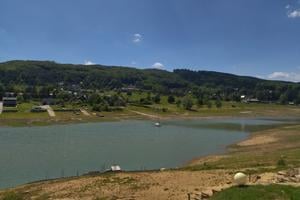
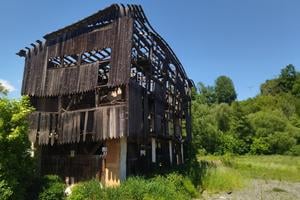
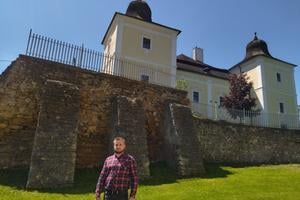
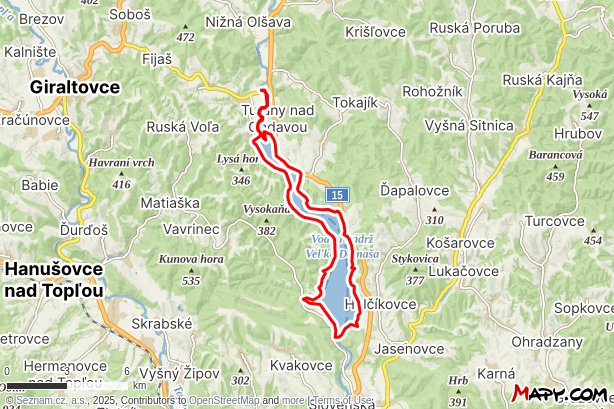
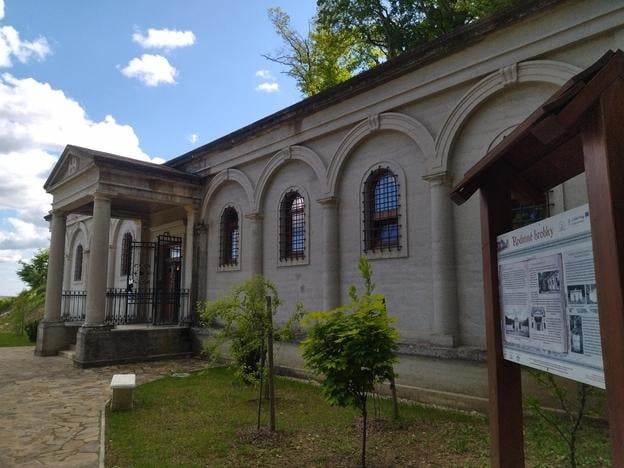 The tomb of the noble Barkóczy family near Čičava Castle. (source: SME/Jozef Ryník)
The tomb of the noble Barkóczy family near Čičava Castle. (source: SME/Jozef Ryník)
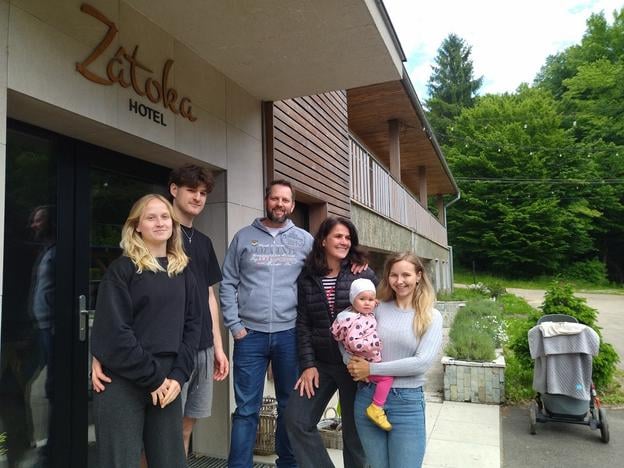 Andrea Falátová with her family outside the Zátoka Hotel on the shores of Domaša. (source: SME/Jozef Ryník)
Andrea Falátová with her family outside the Zátoka Hotel on the shores of Domaša. (source: SME/Jozef Ryník)
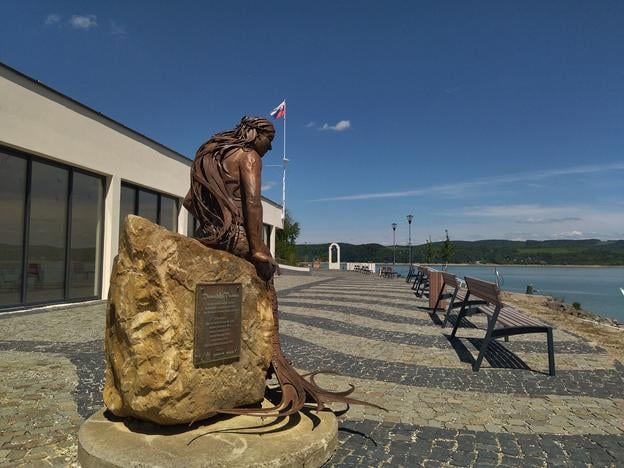 The Mermaid of Domaša, watching over the port of Dobrá. (source: SME/Jozef Ryník)
The Mermaid of Domaša, watching over the port of Dobrá. (source: SME/Jozef Ryník)
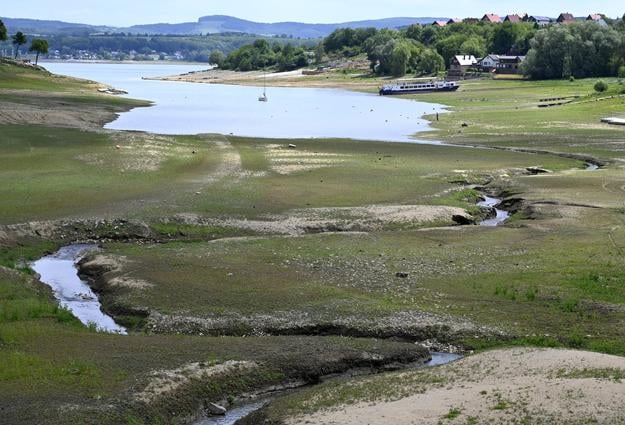 Low water level at the Domaša – Dobrá reservoir on 28 May 2025 in Kvakovce, Vranov nad Topľou District. (source: TASR)
Low water level at the Domaša – Dobrá reservoir on 28 May 2025 in Kvakovce, Vranov nad Topľou District. (source: TASR)
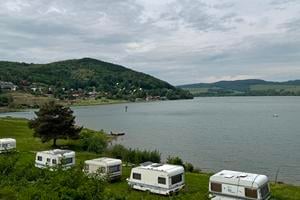
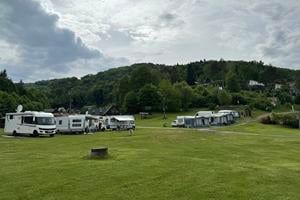
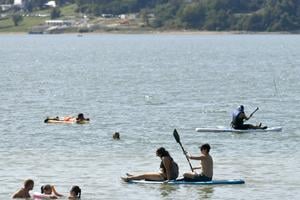
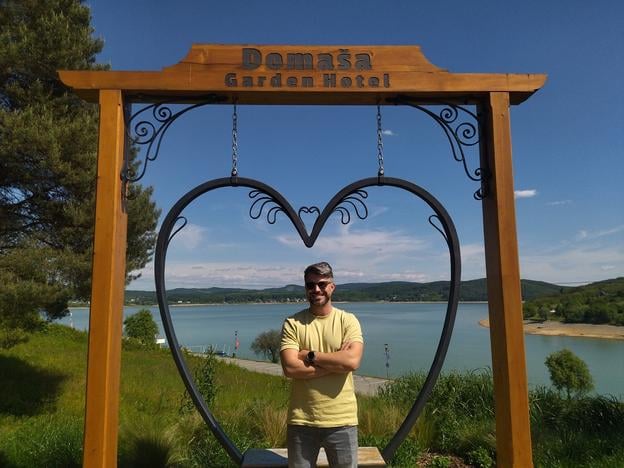 René Pavlík, owner of the Garden Hotel Domaša (source: SME/Jozef Ryník)
René Pavlík, owner of the Garden Hotel Domaša (source: SME/Jozef Ryník)
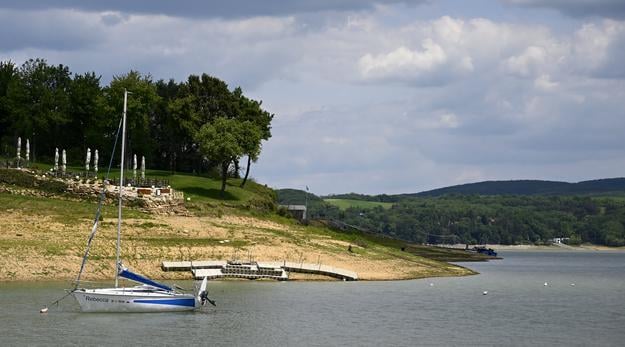 Low water level at the Domaša – Dobrá reservoir on 28 May 2025 in Kvakovce, Vranov nad Topľou District. (source: TASR - Roman Hanc)
Low water level at the Domaša – Dobrá reservoir on 28 May 2025 in Kvakovce, Vranov nad Topľou District. (source: TASR - Roman Hanc)
 Historian Ondrej Glod outside the manor house in Hanušovce nad Topľou. (source: SME/Jozef Ryník)
Historian Ondrej Glod outside the manor house in Hanušovce nad Topľou. (source: SME/Jozef Ryník)
 The crumbling medicinal herb-drying facility in Hanušovce (source: SME/Jozef Ryník)
The crumbling medicinal herb-drying facility in Hanušovce (source: SME/Jozef Ryník)